FREE Printable Books for Young Kids to Develop Reading Skills
In the digital age, it is easy to forget that print books still exist. However, a study by Tirza Lauterman and Rakefet Ackerman shows that children who read print books are better learners than those who read from screens. Nonetheless, print books are typically more expensive than ebooks. To overcome this problem, I put together this list of 100 free printable books for kids. While you’ll still have to pay for printing and assembly materials, you’ll spend much less than you would buying ebooks.
Although there are many articles out there that offer free printable books for children, most of these are simple lists, often with dead links and no explanation for why they had chosen the book. To create a better list, I organized my list using 3 different stages of reading development to help you choose the books that will be the most suitable for your children.
How This List is Organized and Why
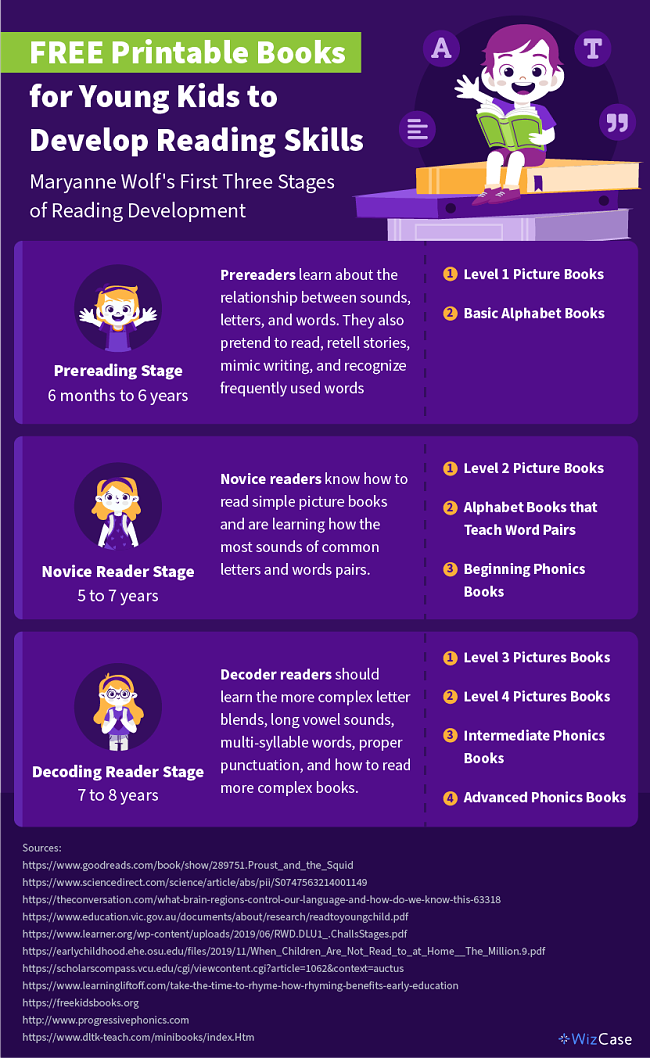
I decided to use the stages of reading development introduced by neuroscientist and child development expert Maryanne Wolf in Proust and the Squid because they’re based on science and not an arbitrary description of skills. Wolf explains how children learn to read by examining the development of specific parts of the brain. The first three stages are:
- Prereader stage: Ages 6 months to 6 years
During this stage, children learn about letters, the sounds they make, how they combine to create words, what reading means, and how to do it. They are not ready to read on their own because the parts of the brain responsible for language haven’t developed yet. - Novice Reader Stage: Ages 5 to 7 years
Children enter the novice stage when they can read familiar books on their own. As they move through this stage, they develop a more complex understanding of phonology (what letters create what sounds), orthography (how words are written), and semantics (what words mean). - Decoding Reader Stage: Ages 7 to 8 years
Children reach the decoding stage when they confidently read simple, unfamiliar texts independently, identify high-frequency and phonetically regular words, and “sound out” unfamiliar one-syllable words. Throughout this stage, they master more complex letter blends, multi-syllable words, and proper grammar rules.
During each of these stages, parents should read to their kids. A 2012 study by the State Government of Victoria and the University of Melbourne shows that the more often a child is read to, the higher their reading skill. More recently, a 2019 study published in the Journal of Developmental & Behavioral Pediatrics explains that reading 1 picture book a day with a child will expose them to approximately 78,000 words in a year. Thus, the more frequently a child is read to, the greater their word knowledge. Wolf recommends that parents read books one level higher than they can read on their own. For example, parents should read Level 2 books to kids reading Level 1 books on their own, Level 3 books to children reading Level 2 books, and Level 4 books to children reading Level 3 books. Lastly, parents should read level 1 books to prereaders that haven’t begun reading on their own.
Although these stages are based on scientific evidence of brain development in children, everyone develops at a different pace. You should assess your child’s reading level based on their abilities, not necessarily their age.
Quick Guide: Find the Books You’re Looking For!
- Free Printable Books to Teach Children Basic Reading Skills
- Even More Free Books to Increase Literacy — For Novice Readers
- Teaching Complex Phonics Skills to Decoding Readers
- Help Kids Become Expert Decoders with Level 3 and 4 Picture Books
- Obstacles to Accessing Free Printable Books – And How to Overcome Them
Books To Teach Children Basic Reading Skills
The first stage of reading development occurs between 6 months and 6 years of age. During these early years, parents should read level 1 picture books to prereaders. This helps them learn the sounds letters make and how they look in simple words.
Simple Picture Books to Read to Your Toddler
Safe Play by Jennifer Cooper-Trent
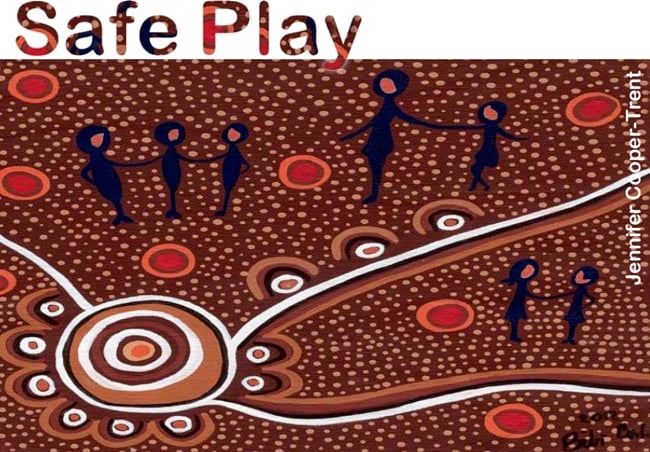
On each page of Safe Play, a picture is presented alongside two rhyming verses. From these rhymes, children learn the importance of sharing and playing safely. Safe Play is the first in a four-part series of books published through the Aboriginal Literacy Foundation, which aims to close the reading gap between Indigenous and non-Indigenous young people. This is a wonderful organization that expands literacy to historically marginalized communities while introducing children to diverse voices.
The other three books in the series are :
- Feeling Good teaches children about different things that make people feel good.
- What We Smell explores the sense of smell and how it protects us.
- What We Eat explains the process of eating, describes different things that can be eaten and explains how eating affects us positively.
Monkey Stuff by Rebecca Bielawski
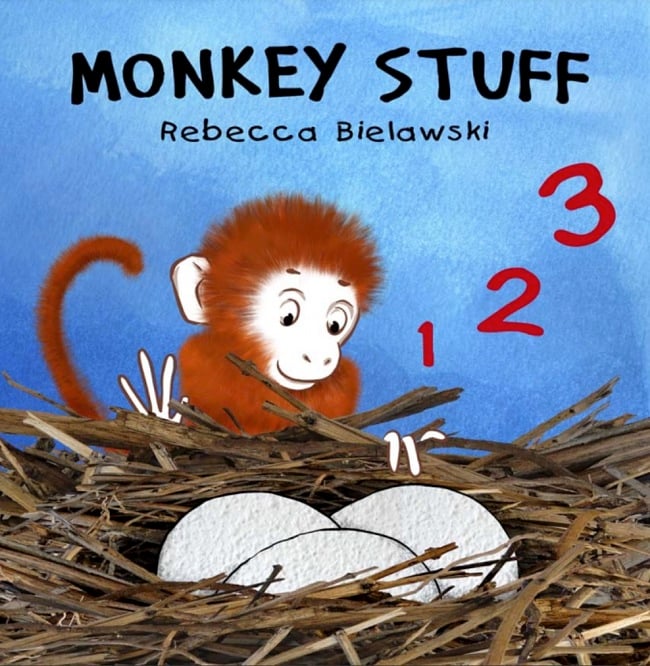
Children learn the first 10 numbers in Monkey Stuff. Rhymes teach children each of the numbers in a clever way that is easy to remember. These types of books are a great choice to read to toddlers because the rhymes and rhythms can increase memory and reading comprehension.
Who’s To Say…? by Deven Tellis, Ed.D
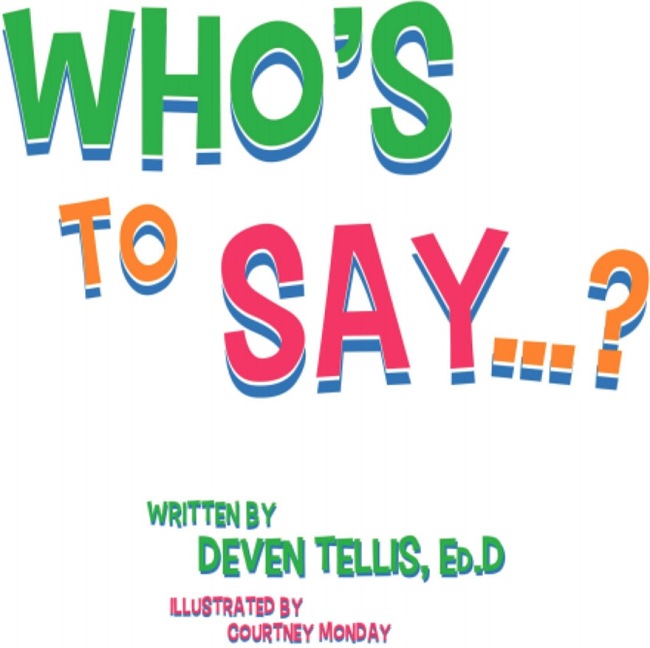
Who’s To Say…? includes a series of positive affirmations that encourage children to follow their dreams. Not only do children learn to feel good about themselves, but they also learn the meaning of simple verbs like “travel,” “dance,” and “speak.” I’m a big fan of books like these because they help build children’s self-esteem while teaching them to read.
Sani and Suri by Shilpi Pradhan
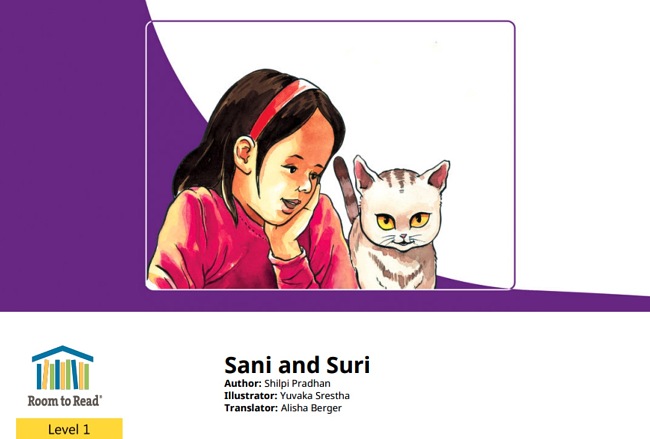
In Sani and Suri, Sani loses her cat friend Suri and goes on an adventure to try to find her. Along the way, she meets many other cats and explores her town. Throughout the book, children learn to recognize several basic nouns and adjectives. This book is really helpful for introducing the different parts of speech — even if you’re not a cat person!
The Three Little Kittens by Chou Chinth
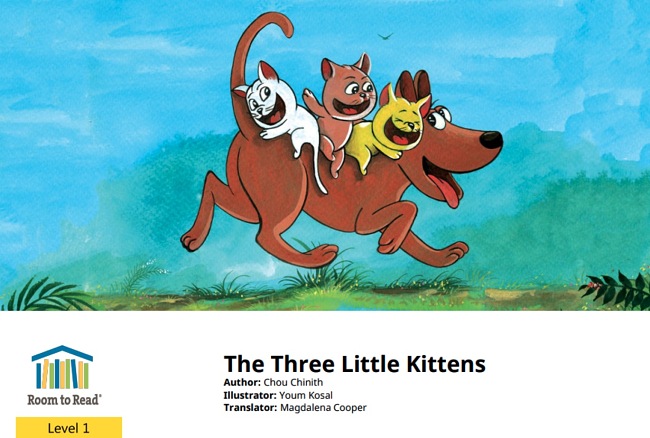
The Three Little Kittens is another book featuring cats, but there is also a dog this time. Unlike many books that showcase cats and dogs as mortal enemies, The Three Little Kittens teaches children that they can be friends. I absolutely love that it teaches children to embrace new friendships, even if they might seem scary at first.
The Bee and the Elephant by Long Ravy
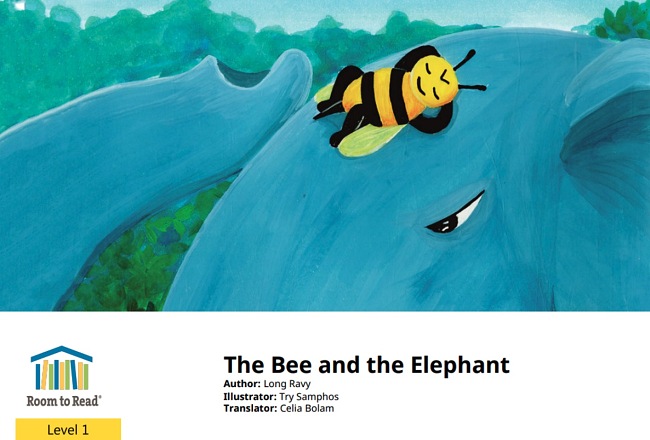
In The Bee and the Elephant, Little Bee is lost and asks Mr. Elephant to help him find his home. Along the way, they stumble into the home of a bird and a bat. Though it is shorter than some of the other books listed, I like how it teaches children the names of various animals.
Tall and Short by Huy Chheng Rattana
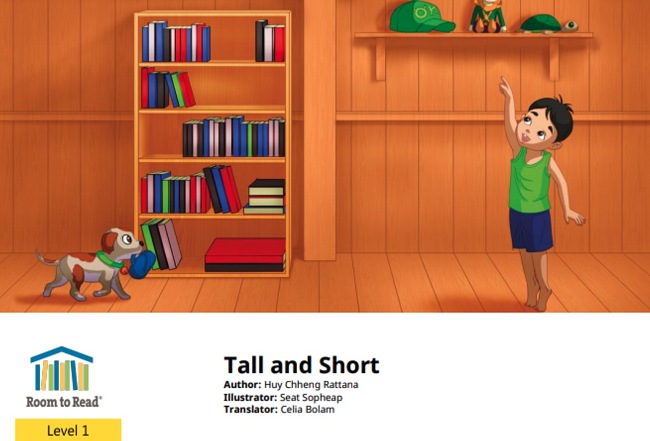
In Tall and Short, a child discusses his observations of family members as they help him get pieces of clothing he can’t reach. Like The Bee and the Elephant, this story teaches children what various words mean; however, the focus is on clothes, not animals. In my opinion, books that focus on one topic like animals or clothes are some of the best for teaching children simple words.
Egg by Mirna Lawerence
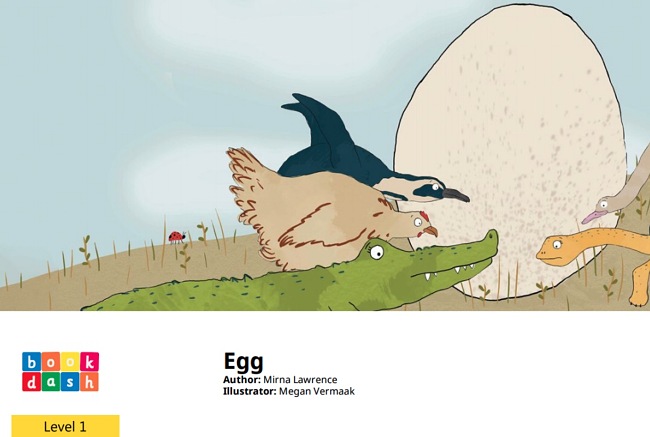
In Egg, several different animals discover an egg. They question whether it is their egg but soon learn it belongs to an ostrich. This book teaches children the names of animals and explains that they’re not all the same. Even animals that lay eggs don’t lay the same type of egg. As a result, this is a great book to begin teaching children how to identify differences between similar things.
Chiu’s Power by Shrujana Shridhar
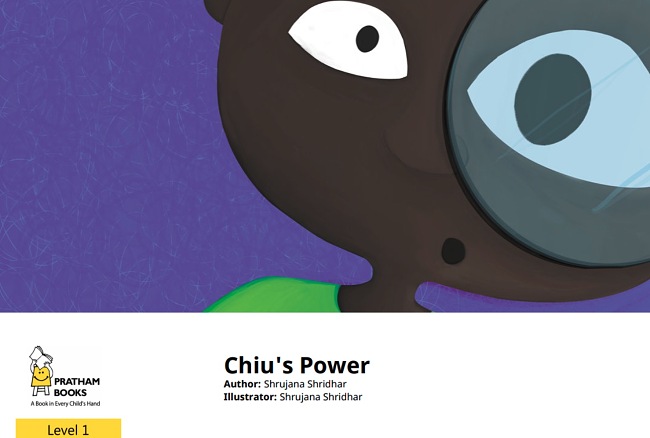
Chiu has trouble seeing the world around her and believes she has magic powers. However, she really just needs glasses. Books like Chiu’s Power are important because they help to normalize differences between people. Some of us need glasses; others do not. And this book teaches children that that is alright.
Tiger, Tiger, Where Are You? By Mujahid Khan
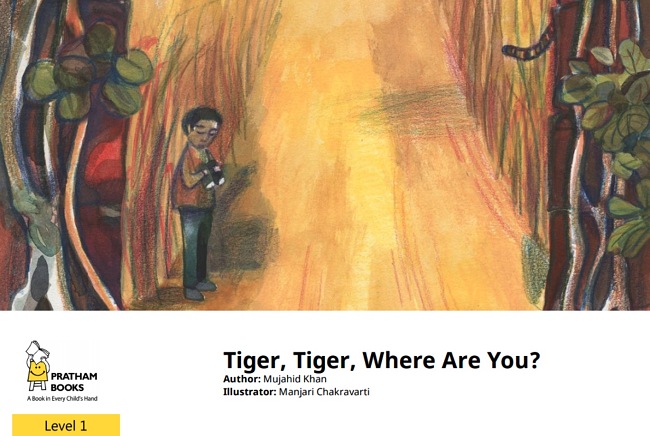
In Tiger, Tiger, Where are You?, children go on a journey to find a tiger. While the story is technically fictional, it is based on real-life explorations by real biological researchers. This makes it a perfect way to acquaint young children with the actual science behind tracking animals.
Alphabeti-cool by Rebecca Bielawski
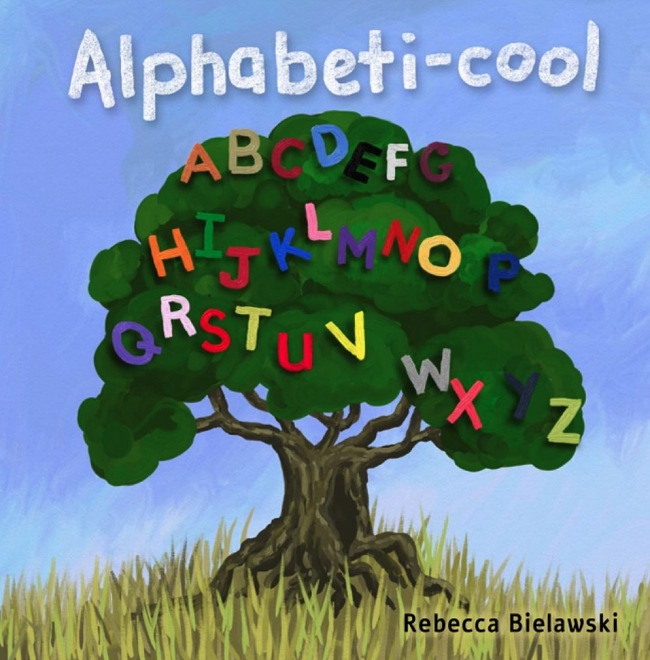
Alphabeti-cool teaches children the letters of the alphabet. Each page features a letter, a picture, and a few words describing the picture. This book is great to introduce kids to the alphabet as it uses short, easy-to-remember words and fantastic artwork.
Use Alphabet Story Mini Books to Teach The Building Blocks of Language
While Alphabeti-cool introduces the whole alphabet, children may need more detailed lessons to learn each letter. DTLK, a children’s craft site, facilitates this with their What Begins With…? series of free printable mini-books. Each book is 10 pages long and focuses on one letter. It highlights words that begin with that letter by using complete sentences and pictures.
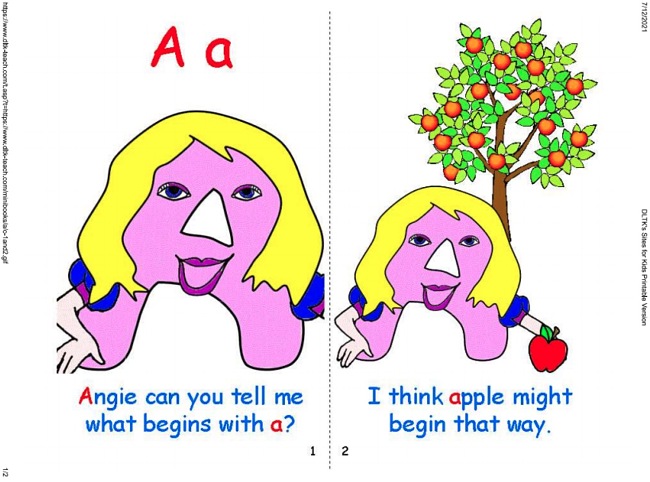
A great feature of these books is that there are two versions. The color version comes with each picture colored in. A black and white edition allows children to color in the pictures, adding a kinesthetic element to the lesson and encouraging a deeper focus on what’s being taught. In addition to this series, DTLK produces a ton of supplementary crafts and other mini-books to make learning fun. And when learning is fun, kids want to learn more.
Even More Free Books To Help Increase Literacy – For Novice Readers
When a child enters the novice stage, they can read familiar books independently; however, they still need to learn complex phonics, and basic grammar to begin reading unfamiliar books. Beginning Phonics books teach these skills, while level 2 picture books help children move through the novice stage and become successful decoders of the written word.
Teach Letter Sounds, Pairs, and More with the Alphabetti Book Series
Progressive Phonics’s “Alphabetti” series is a lot like the DTLK What Begins With…? series, but it goes quite a bit deeper. Each book in the series investigates the sounds made by some of the most common letters in the English language. The first book focuses on five letters to help teach children how they can come together to create unique words. Most other books in this series either focus on one additional letter or review what is taught in earlier books. Using these books, children learn how to sound out unfamiliar words by using the sounds of the letters they have already learned.
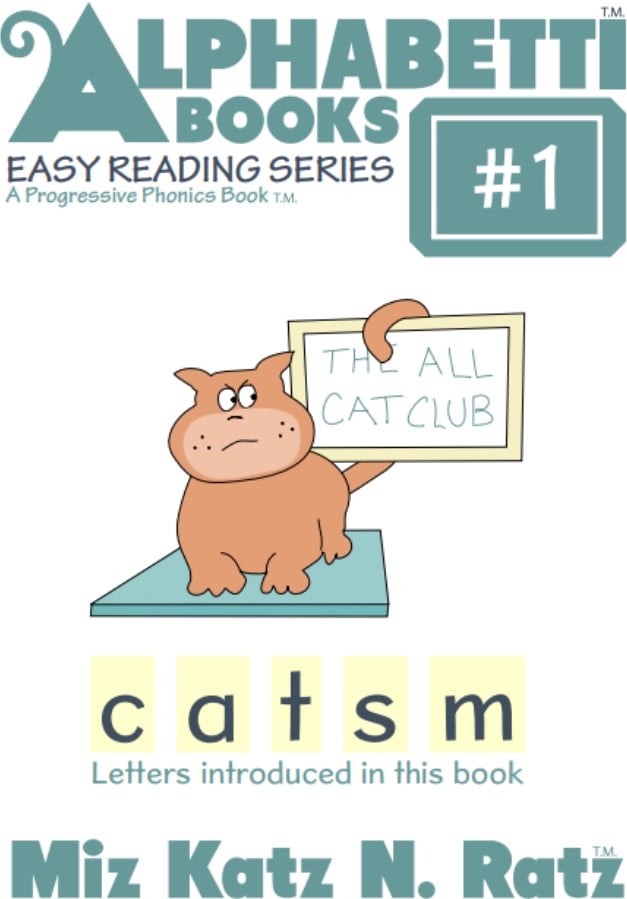
What’s really cool about this series is how much material it contains. To help navigate the text, every book includes a Table of Contents. Then there is a Quick Start Guide which teaches parents and teachers how to use the book. Following the Quick Start Guide are lessons that teach children the sounds of specific letters. Lastly, fun and engaging stories follow these lessons to help ensure understanding of the material. Each book feels like a free classroom in your hands. All you have to do is visit their website and choose the book from The Alphabetti series that you want to start with. Download the appropriate PDF, print, and assemble.
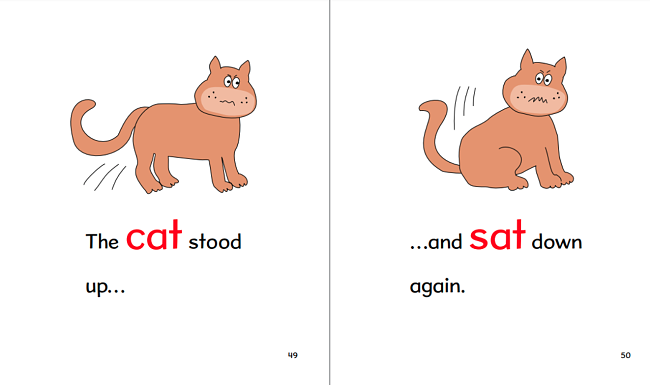
Help Kids Learn the 5 Short Vowels with the Beginner Phonics Series
In addition to the Alphabetti series, Progressive Phonics has three series of Phonics Books. The Beginner Phonics series expands on the material learned in the Alphabetti series. Children who have learned about the sounds and shapes of the most common letters now learn about letter pairs, short vowel sounds, and their most common word families. For example, the first book teaches the short vowel “a” and letter pairs like “ai” and “at.”
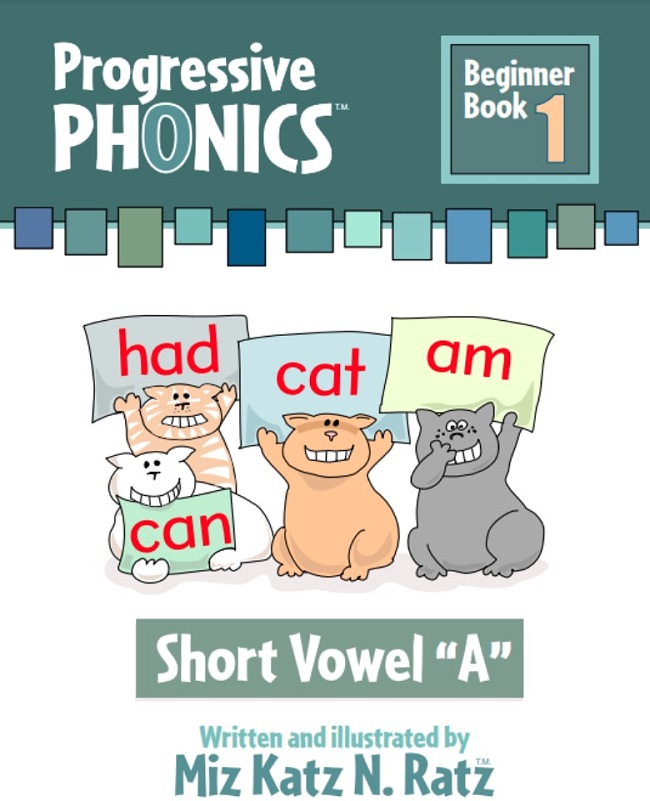
This series and the other Phonics series are organized like the Alphabetti series with a table of contents, teacher guides, lessons for children, and stories that highlight the word families taught in each book. One of the best things about the three Phonics series is the amount of supplementary material that comes with each book. There are activity worksheets, lesson plans, alphabet review pages, and they also have lists of the words taught with different sizes of fonts. Parents and educators can tape the lists with the larger letters on a chalkboard or wall while transforming the ones with smaller letters into flashcards. Either way, Progressive Phonics makes reviewing common letters with children a breeze.
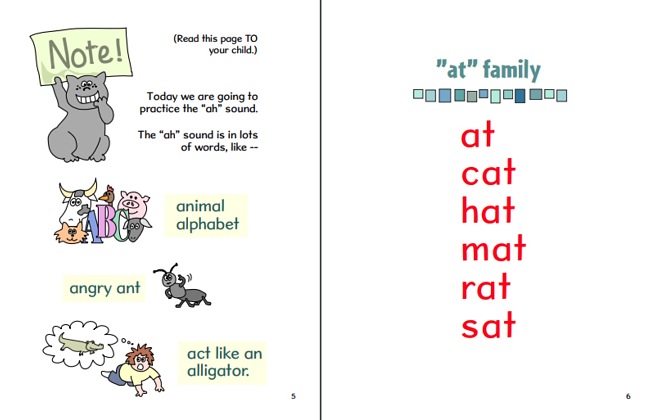
Graduating to Level 2 Picture Books
During the early novice stage, parents should read level 2 books to their children. By the end of this stage, children can read these books independently.
Reba Wants Ice Cream by Sultana Zakia
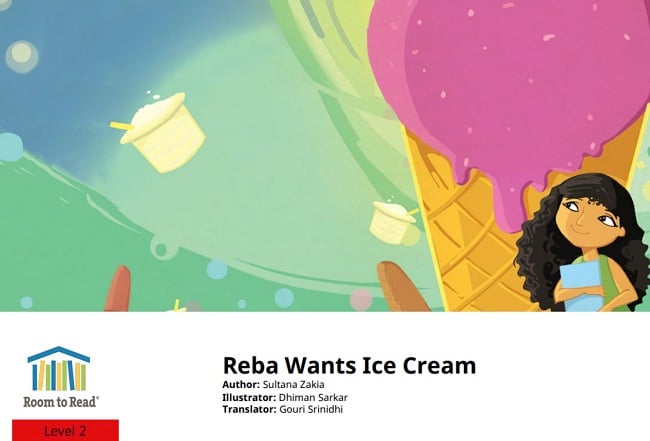
In Reba Wants Ice Cream, Reba is given too much change by a shopkeeper. She thinks about keeping it but ultimately returns it. Not only does she show children that it’s best to be honest but that it’s alright to struggle with moral questions.
Two Mice by Aruna Keerthi Gamage
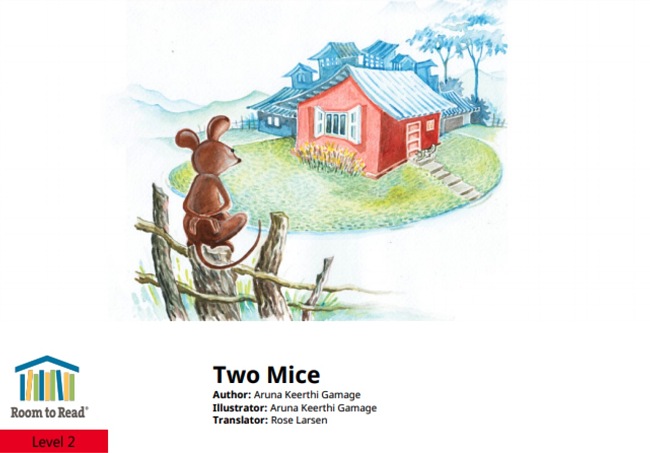
In Two Mice, an animal mouse meets a computer mouse. The animal mouse argues that the computer mouse is not a real mouse. Despite this argument, the computer mouse protects the animal mouse when a cat appears on the scene. The two then become friends. I love that this book teaches children about homonyms and friendship at the same time.
A Special Nest by Kativa Singh
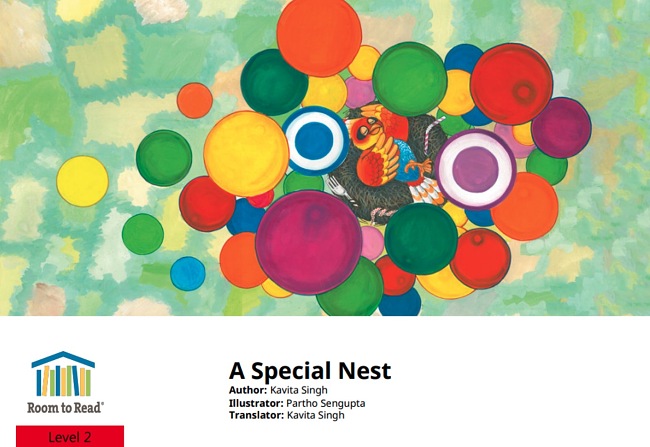
In A Special Nest, a bird struggles to find a place to build her nest. An elephant destroys her first nest, and a human destroys her second one. However, using creative thinking, she discovers a solution that might not have seemed obvious at first. I like the author’s use of clever metaphors to teach simple lessons about creativity, persistence, and critical thought.
Goby’s Noisy Best Friend by Sheila Dhir
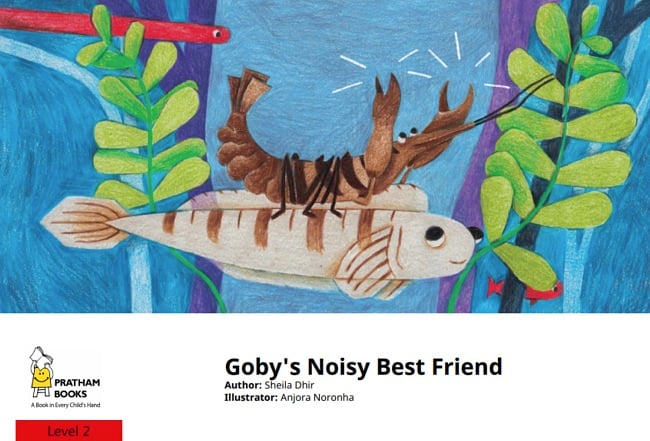
In Goby’s Noisy Best Friend, Goby, a fish, and Snap, a pistol shrimp, are best friends. However, Goby becomes tired of the noises that Snap’s pincers make. Not long after, he learns how vital that noise is to his survival. This cute book makes learning about symbiotic relationships fun. After the story, there are even educational activities to help your child understand how animals help each other in the wild.
Get Down, Rocky! By Annie Besant
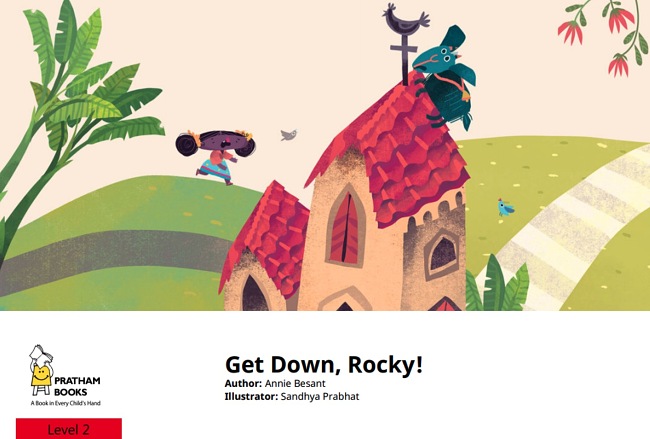
In Get Down, Rocky!, a goat named Rocky climbs on top of a church to try to eat a fake rooster. Though many of the villagers are upset with Rocky, they all help get him down. This book is a fun way for your child to learn about community and working together.
Ghum-Ghum Gharial’s Glorious Adventure by Aparna Kapur
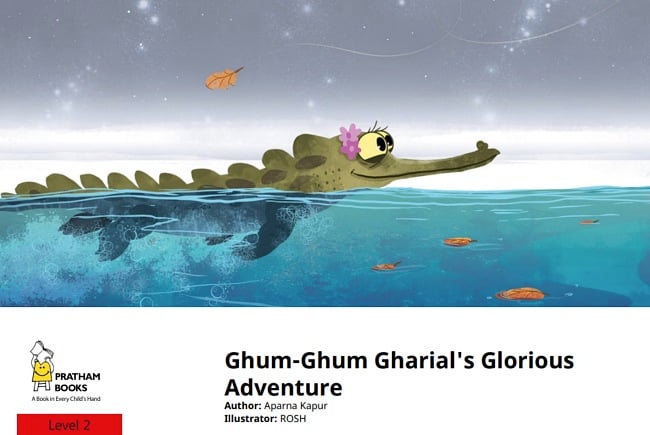
In Ghum-Ghum Gharial’s Glorious Adventure, Ghum-Ghum, a fish-eating crocodile called a “gharial,” loses her family. She asks many different animals to help her find them again. They are eventually reunited. Ghum-Ghum Gharial’s Glorious Adventure offers you an excellent opportunity to teach your kid about the importance of family and sticking together!
Meera and Ameera by Nimmy Chacko
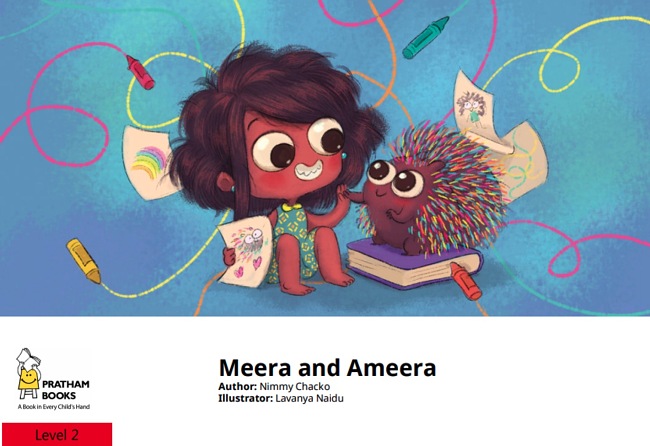
Young children often have imaginary friends. Meera and Ameera normalizes this experience with a fun story about a young girl named Meera and her imaginary friend Ameera. Your kids will love how sweet Ameera the colorful porcupine is.
How To Catch the Wind by Anjali Vaidya
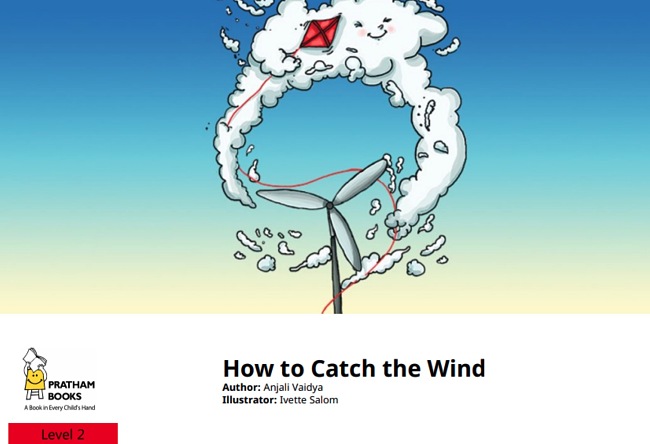
To combat the current climate crisis, we need to begin using green energy. Part of this means teaching children about how these forms of energy are created. How to Catch the Wind not only teaches children about wind turbines but also introduces them to several basic scientific facts about air. This is a perfect book to begin teaching more complex subjects like science and social studies. It makes a great transition to level 3 picture books.
Teaching Complex Phonics Skills to Decoding Readers
Decoding text is the process of translating written letters and words into sounds. During the decoding stage, they learn the final rules of decoding text. They already know the sounds of most common letters and how to sound out simple words. However, they are still learning more complex phonics skills, increasing their word knowledge, and familiarizing themselves with multisyllabic words. To help them meet these milestones, parents and teachers can use the Intermediate and Advanced Phonics series published by Progressive Phonics.
Begin the Decoding Stage With Intermediate Phonics
The Intermediate Phonics Series consists of 15 books that teach a variety of phonics rules. This series builds on material taught in the Alphabetti and Beginner Phonics series in two ways. First, it introduces new material. Second, it teaches the new material in a more complex way. In the Alphabetti series, the focus is on single letters. The Beginner Phonics series moves from single letters to letter pairs by focusing on short vowel word families. The Intermediate Phonics series goes much further.
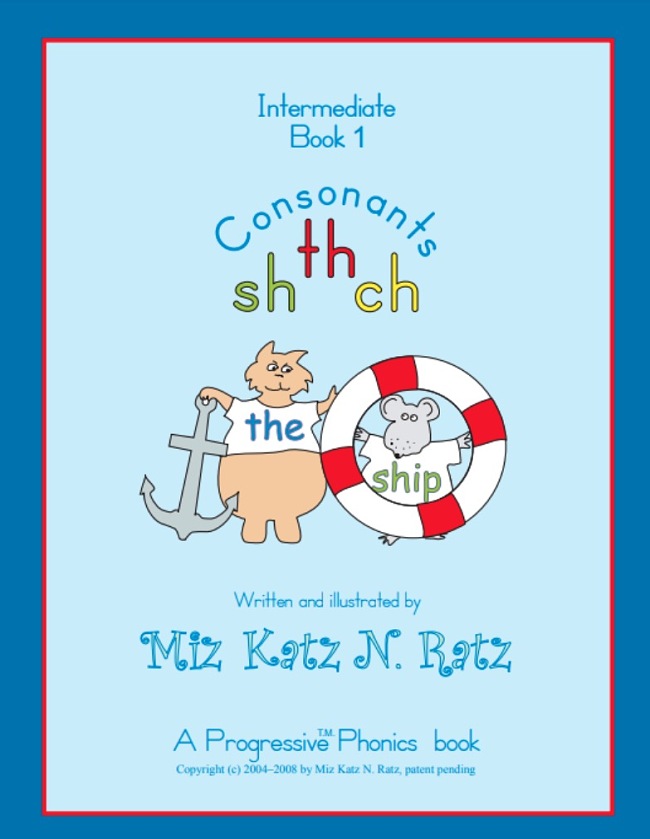
Nine of these books focus on letter pairs with one sound, like “sh,” “sp,” “tr,” “zz,” “ai,” and “ie”. The six other books focus on long vowel sounds, the difference between vowels and consonants, rules about the silent “e,” and how the sound of vowels can change when next to an “r” or “l.” By teaching children in this way, you help them develop critical thinking skills that go far beyond reading. Learning how to build from simple to complex material helps students in science, math, social studies, and just about every other subject they’ll study.
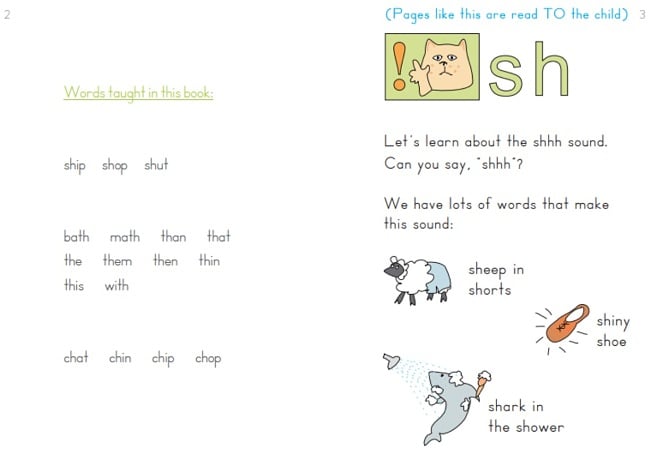
Push Toward Fluency with Advanced Phonics
The Advanced Phonics Series delves deeper into topics introduced in the Intermediate series. In the earlier series, most books cover one or two subjects. Some of the books in the Advanced series are similarly focused, but others cover a much wider breadth of material. Book 1, for example, focuses only on digraphs with the letter “y,” while Book 2 introduces syllables, the function “t” at the end of a word, and how to determine whether a vowel is long or short. Throughout the 8-book series, children learn more about digraphs, trigraphs (three-letter blends with one sound), advanced long vowels, irregular words, multi-syllable words, contractions, plurals, simple punctuation, and exceptions to standard phonetic rules.
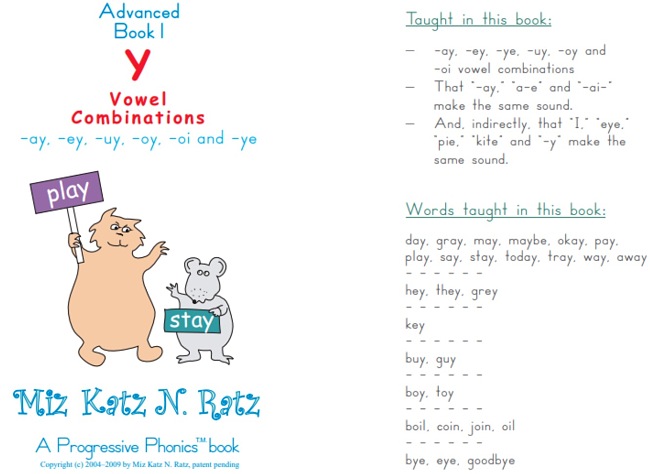
Help Kids Become Expert Decoders with Level 3 and 4 Picture Books
By the decoding stage, children know how to read. Now they are learning how to learn from what they read. Level 3 and 4 books help facilitate this process by teaching children simple concepts with engaging stories and supplementary appendices.
Level 3 Reading Books for the Early Decoder
Level 3 picture books include complete stories, simple plots, short paragraphs, and complete sentences. Each book teaches children about something outside the text. Additionally, many include appendixes that expand on the concept or idea introduced in the story. By combining fictional stories with non-fictional material, children become better readers while also learning more about science, social studies, and the world in which they live.
The Storybook Princess by Prum Kunthearo
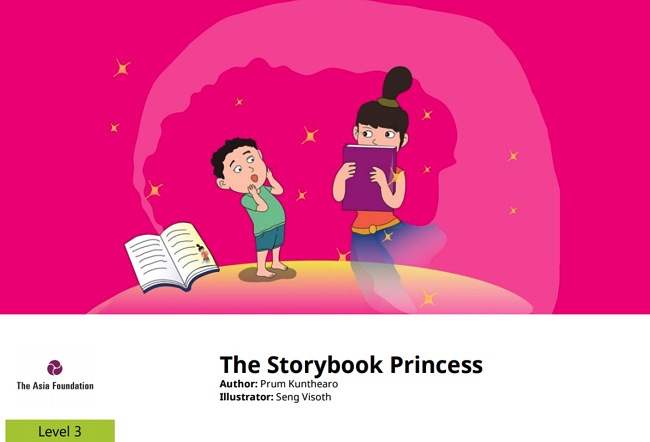
In The Storybook Princess, a child named Chomnan dreams of a princess whom he inadvertently frees from a witch’s curse by asking her a bunch of questions. The next night, when his father tries to read him a story, Chomnan instead tells his father the story of the princess. This is a great book for teaching children the importance of dreaming big, asking questions, and storytelling.
Disagreement Among Occupations by Beatrice Inzikuru
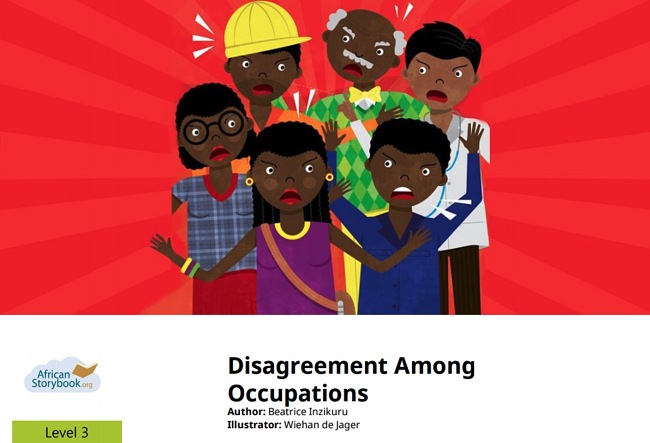
All children have dreams. They may want to be a farmer, a doctor, or a teacher. Disagreement Among Occupations teaches children that no matter their dream job, all of our contributions matter. This book also gives you an opportunity to talk about conflict resolution and compromise with your children — a great lesson at any age.
Ma, Is That You? By Aakanksha Mittra and Parth Nadkarni
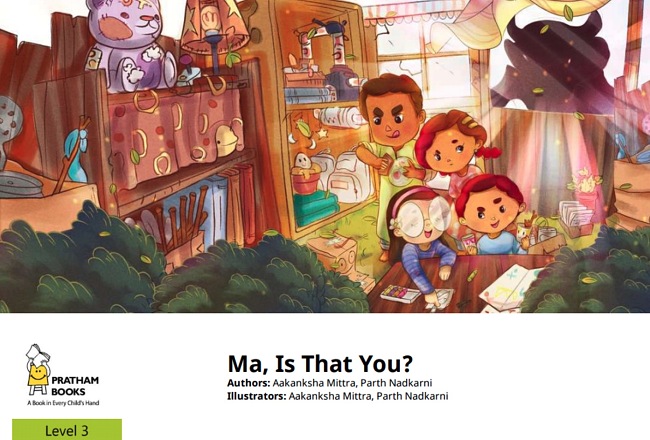
In Ma, Is That You?, a monster tries to break into a children’s secret meeting place by pretending to be their mother. Fortunately, the children don’t let anyone without providing a series of passwords. The story is supplemented by a short lesson on multi-factor authentication (MFA). Using monsters as a metaphor for cyberthreats is a clever way to teach children the importance of MFA and can help you open a conversation about cybersecurity with your little ones.
Why Are Bubbles Round? By Sukanya Sinha
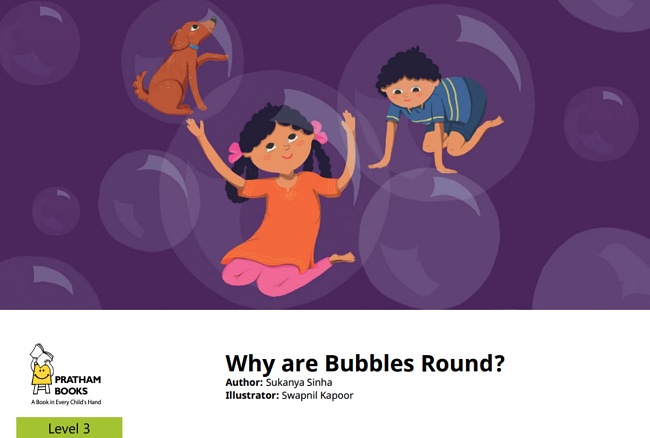
In Why Are Bubbles Round?, twins Manu and Maya ask their mother for money to buy a bubble kit. She instead recommends they build their own. They do so by mixing shampoo with water and bending a piece of wire into various shapes. The twins discover that the bubbles always come out round no matter how they shape the wire. An appendix explains why while delving deeper into concepts like gravity, surface area, and weight. Even better, it also includes directions for making a bubble kit.
Eye Can See by Meethil Momaya
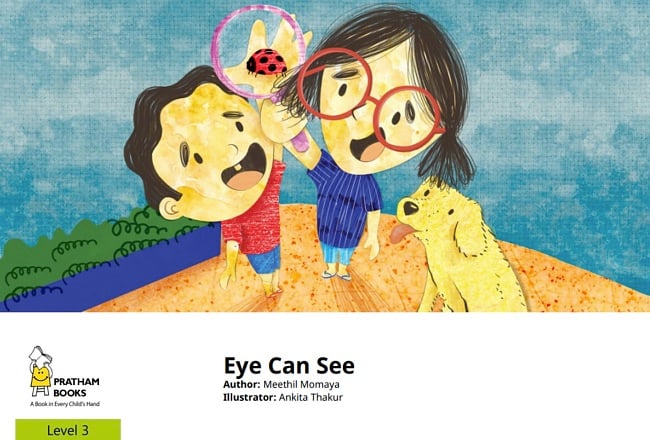
Chanda shows Tinku his parent’s laboratory and introduces Tinku to various scientific instruments. Chanda also discusses their purpose and how to use them. After the story, an appendix explains how lenses work to magnify and shrink objects. Books like these are excellent for teaching reading and science at the same time.
Why Do Sunflowers Love the Sun? By Siddharth Mehta
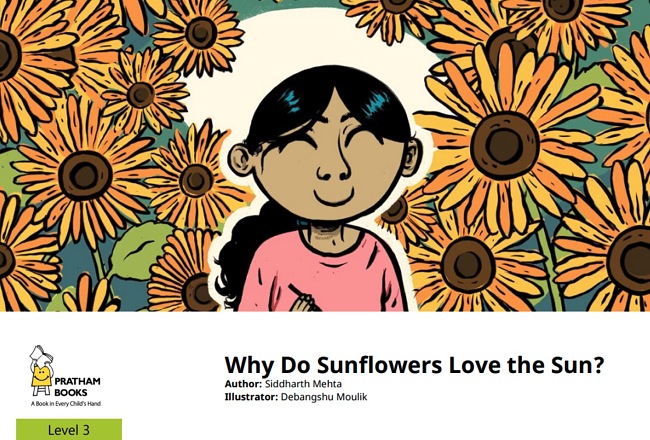
The book starts with Viveka painting the sunflowers near her house. The following day, she finds that the sunflowers in her picture are facing a different direction than the ones outside. She draws them again, but the next day finds the same thing. Eventually, she discovers that the sunflowers follow the sun. After the story, there is a short explanation of why this happens. Like Eye Can See, this is another book that brings science and reading together in a really engaging way.
Decision by Ursula Nafula
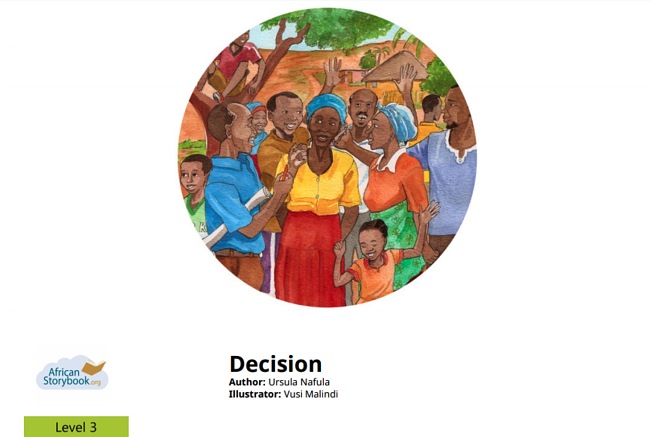
A group of people in an impoverished village must rely on external aid to survive. However, by working together, they solve many of their own problems without external assistance. While not all issues of global poverty can be solved this easily, Decision does present tough topics in a way kids can understand.
Level 4 Books to Master Decoding Skills
Level 4 picture books are a lot like level 3 picture books. However, the paragraphs, sentences, and words are longer and more complex. Additionally, the plots of the stories are often much more developed with sophisticated narrative elements, including plot, character, and setting. Lastly, the lessons these books teach are more complicated. These books are really helpful for preparing children to read books without pictures.
The Adventures of Philautus Frog by Kartik Shanker
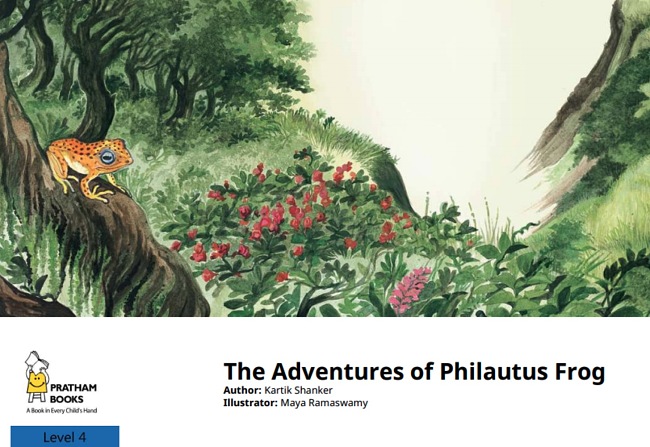
A tree frog named Philautus leaves his home at Big Tree to find the big blue sea. During his adventures, Philautus encounters different ecosystems and the creatures that live there. While some of the level 3 books teach general scientific concepts, The Adventures of Philautus Frog covers ecology in much greater depth.
The Mystery of the Cyber Friend by Zac O’Yeah
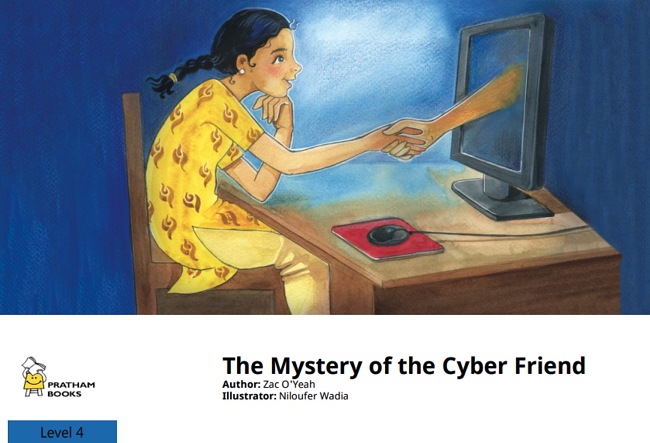
The internet can be a dangerous place. In The Mystery of the Cyber Friend, Sree learns this when she is befriended by a stranger who knows personal details about her life. This story teaches kids critical lessons about protecting themselves online. With the near-ubiquity of the internet, we have to do everything we can to protect our children from cyber predators. Fortunately, we have books like The Mystery of the Cyber Friend to help us.
Lost in the Internet by Kris Stokes and Madhurima Chakraborty
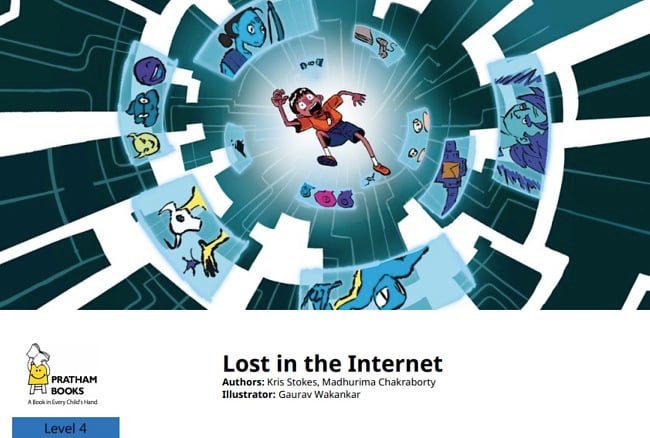
Another book about the internet is Lost in the Internet. Herein, a child named Kunal is sucked into his Mom’s phone while watching online videos. While there, he meets TCP Aunty, who teaches Kunal about how the internet works. These lessons focus on core routers, pixel bits, transmission control protocols, and similar concepts. In the digital age, it’s never too early to teach children about the internet, and this book does a fantastic job of making complex concepts accessible even for children. To be honest, even I learned a couple of things from Lost in the Internet.
There’s a Hole In My Galaxy by Ananya Dasgupta
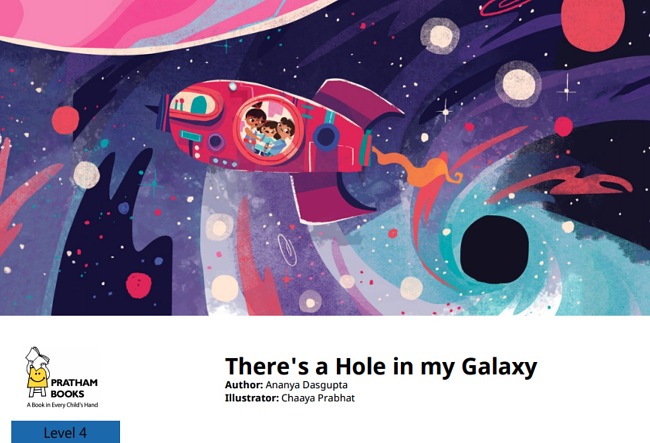
The sci-fi picture book There’s a Hole in My Galaxy takes place in the year 2563. The book begins when Maya and Ava borrow a spaceship to go to Pluto. Along the way, they meet a black hole and are nearly sucked in. This engaging story and its supplementary appendix are one of my favorite books for teaching children about our solar system.
Drop by Drop Makes the Ocean by Bhumija Rishi
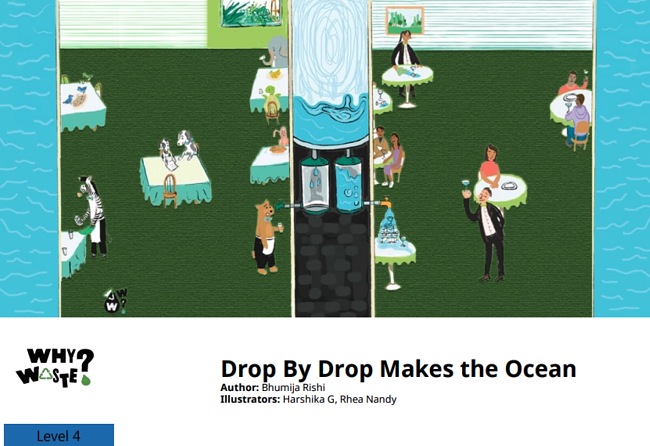
In Drop by Drop Makes the Ocean, industrialists drain a pond and build a factory that pollutes the air and land. At first, the villagers don’t know what to do to protect their environment. However, the children of the village have an idea. They use Facebook and WhatsApp to raise awareness and force the industrialists to close their factories. I love that this book teaches children how to use collective direct action to protect the environment.
I Know My Rights by Menaka Raman
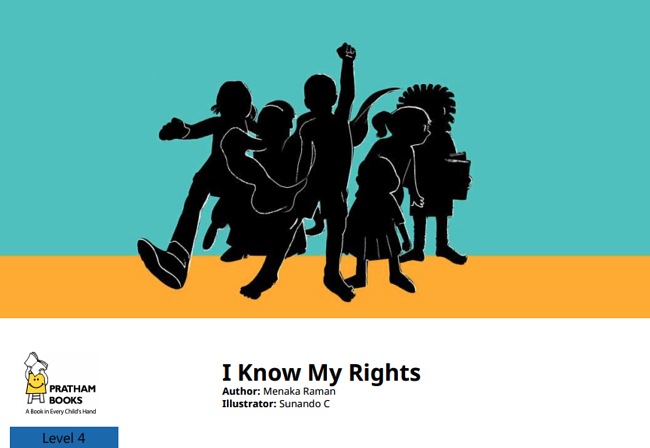
Even children possess human rights. I Know My Rights lists these rights in a way that’s easy for them to understand. Some of these are negative rights, like the right not to be abused. Others are positive rights like their right to self-expression. This is a really powerful book that teaches children that they have rights just like grown-ups and that they deserve to be upheld.
Obstacles to Accessing Free Printable Books – And How to Overcome Them
Nothing in this world is free, not even “free” printable books. While you don’t have to buy them, they still need to be printed and assembled. If you print the books at home, you will need a printer, paper, and ink. However, if you do not have a printer, you will have to print these pages at a library or other location, which is liable to charge by the page. In either case, you will need to also pay for assembly materials. Despite these costs, you can save lots of money with free printable books.
In addition to financial costs, there are time costs. Unlike print books or ebooks, free printable books require time for printing and assembly. Nonetheless, this can be a fun activity for parents and teachers to share with their kids, and it’s really easy to put the books together. Progressive Phonics includes three different ways in their frequently asked questions page, while this video from DTLK offers straightforward instructions for putting together their mini-books. These instructions can be applied to most side-by-side books. Putting the books together costs time, but this time can also be used as an investment into craft time with your child!
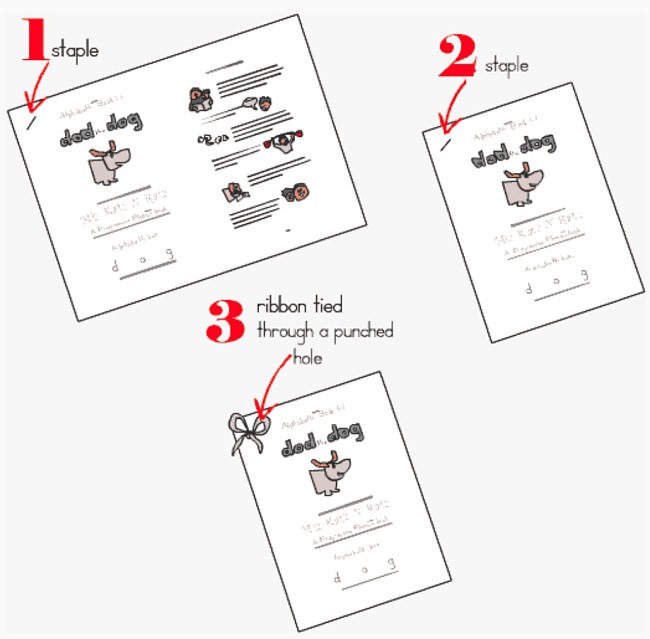
Master Reading Development with Free Printable Books
Teaching your child to read shouldn’t cost you hundreds or thousands of dollars. Unfortunately, if you buy 100 books or ebooks, you might end up spending even more. To save yourself from throwing away all that hard-earned cash, you can print out these 100 books for free and help guide your child through the first three stages of reading development. Bookmark this page today, and I promise that you’ll still be consulting it a year from now. And believe me: your child will thank you!




Leave a Comment
Cancel